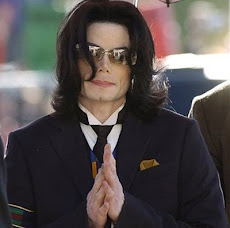NAIROBI
From The Economist
A bunch of governments is trying to stem the flow of lethal weapons
 Lethal toys for boys
Lethal toys for boysTHE UN reckons there are some 500m small arms in circulation around the world. At least 70m are Kalashnikovs. The Soviet-designed automatic assault rifle, the Avtomat Kalashnikova, was first manufactured in 1947 (hence its commonest version, the AK-47). Its compactness and durability have made it Africa’s killing weapon of choice since the 1980s, despite its inaccuracy. These days, the continent has all of the score of Kalashnikov variants, including the AKM, the Chinese Type 56, and the Serbian Zastava M70.
Only a small share of the thousands of hapless Africans killed every year by Kalashnikovs die in war. Most are victims of the police, robbers, cattle raiders and tribal skirmishes. In an attempt to make it harder for organised criminals to arm themselves, and in a nod to global counter-terrorist efforts, a group of ten eastern and central African countries, including Ethiopia, Rwanda and Uganda, which owe their liberation movements partly to the Kalashnikov, has agreed to harmonise gun laws. It has promised longer sentences for people who carry guns illegally and new electronic marking of state-owned weapons in the hope of cutting the number of Kalashnikovs seeping into the black market, where they are bought more cheaply than anywhere else in the world. The going rate in Somalia and Sudan is around $400, much cheaper than in Asia.
Police chiefs from this new African club of countries paraded their claimed success in curbing the small-arms trade by inviting journalists to watch piles of confiscated rifles being burnt. But that is unlikely to hurt the shadowy, highly profitable illegal trade. New Kalashnikovs keep flowing into Africa. Only a fraction gets confiscated.
Last year a hijacked Ukrainian ship with a cargo of tanks bound for South Sudan was also carrying 10,000 AKs and ammunition, according to the Small Arms Survey, a Swiss-based pressure group. British intelligence last month flagged up what may have been another Ukrainian attempt to export Kalashnikovs to Africa from its Soviet-era stockpiles. It is easy to sell the weapons once they reach Africa. Borders are porous. Corruption eases the flow. Arms dealers can readily buy forged licences and paperwork from officials.
The Kalashnikovs’ popularity puts a premium on the 7.62 x 39mm calibre bullets, which often cost more than those used in rifles such as the German G3 and the old British Lee-Enfield. African policemen and soldiers are often tempted to sell the bullets illegally, since they can each fetch as much as $1 or more. Tracking the ammo is tricky. It is seldom stamped, its provenance often even murkier than that of the guns.
In the harsh Turkana region of northern Kenya a British small-arms specialist, James Bevan, found Kalashnikov cartridges from 25 countries and 51 factories. Half of them, he reckons, had been bought or pilfered from state armouries.
The Economist








No comments:
Post a Comment